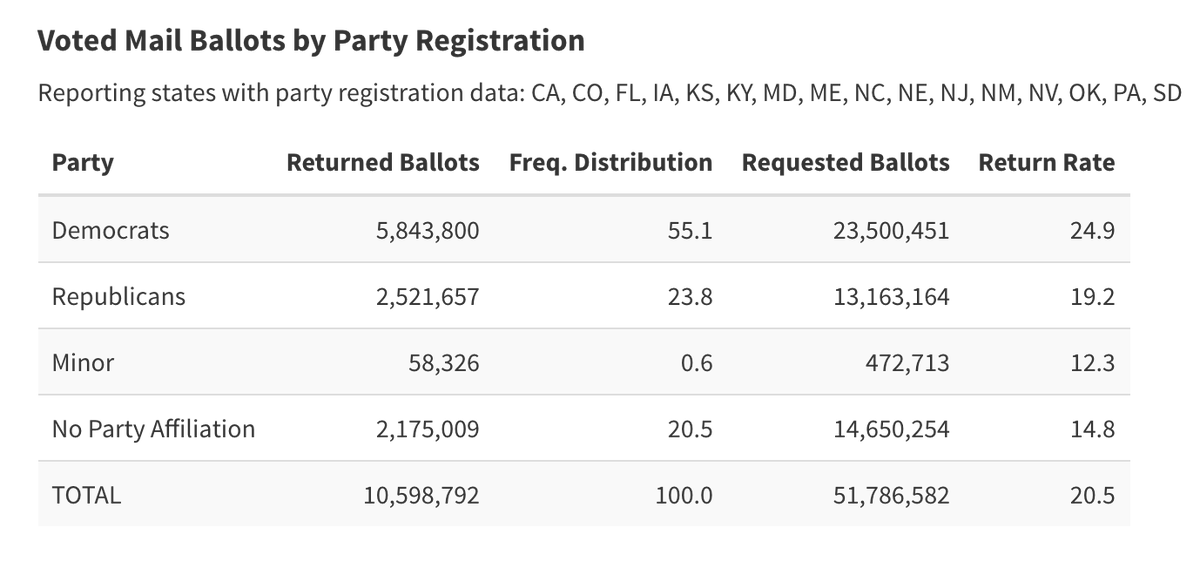So far, returned mail ballots are D +31 (not a surprise given what polls show) whereas the set of mail ballots that have been requested but not yet returned are "only" D +17. Why does this matter?
https://electproject.github.io/Early-Vote-2020G/index.html">https://electproject.github.io/Early-Vot...
https://electproject.github.io/Early-Vote-2020G/index.html">https://electproject.github.io/Early-Vot...
If (as this data shows) Dems are returning their ballots sooner, then mail ballots cast closer to Election Day—which in many states, will also be counted later—may not be as D as mail ballots overall. They could even wind up being R-leaning, conceivably.
This means there might not be as much of a blue shift in states with late-counted mail ballots, especially ballots that arrive after Election Day in states that allow that, as people might assume.
Also keep in that in the world in which the race is close enough for this to matter is probably a world in which Trump has made a fairly big comeback to close the race to say Biden +5. If there& #39;s late movement toward Trump, late-received mail ballots might not be so blue at all.
Anyway, when it comes to vote counting and the timing of when states are called or what the results look like on a given point on Nov. 3, 4, etc. people are actually oversimplifying when they talk about mail votes (D) vs. in-person votes (R). There are really 5 relevant tranches:
1. Early-arriving mail votes (VERY D)
2. Late-arriving mail votes (probably somewhat D, but hard to say)
3. Early in-person votes (somewhat D)
4. In-person Election Day votes (VERY R)
5. Provisional ballots (traditionally D but harder to say this year)
2. Late-arriving mail votes (probably somewhat D, but hard to say)
3. Early in-person votes (somewhat D)
4. In-person Election Day votes (VERY R)
5. Provisional ballots (traditionally D but harder to say this year)
In certain states, some of these distinctions may collapse (e.g. if early in-person votes are counted simultaneously with Election Day in-person votes) but overall there are a lot of moving parts and which tranches are counted at which time will differ from state to state.

 Read on Twitter
Read on Twitter


